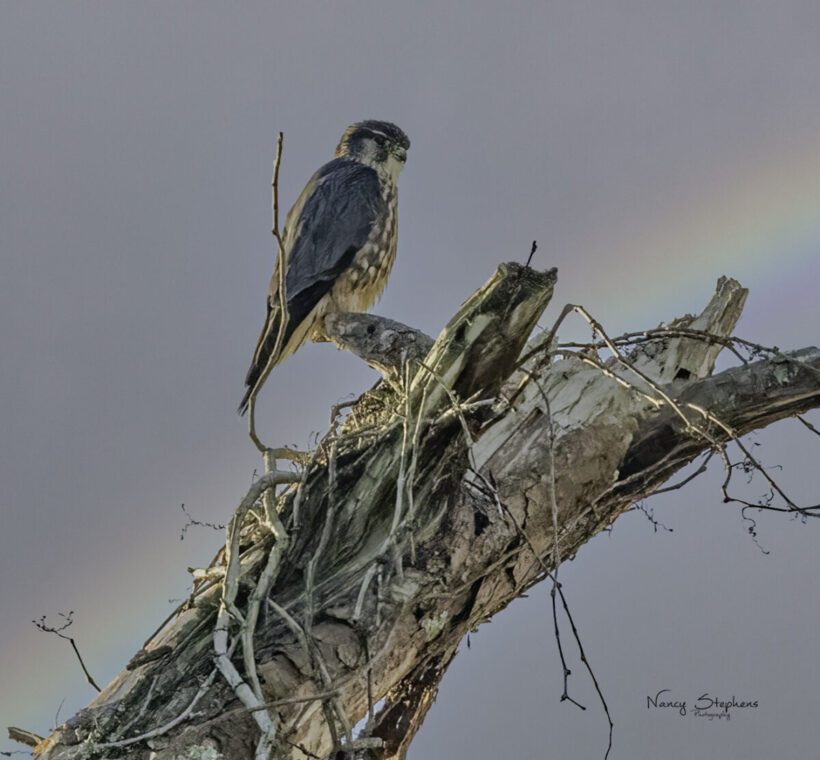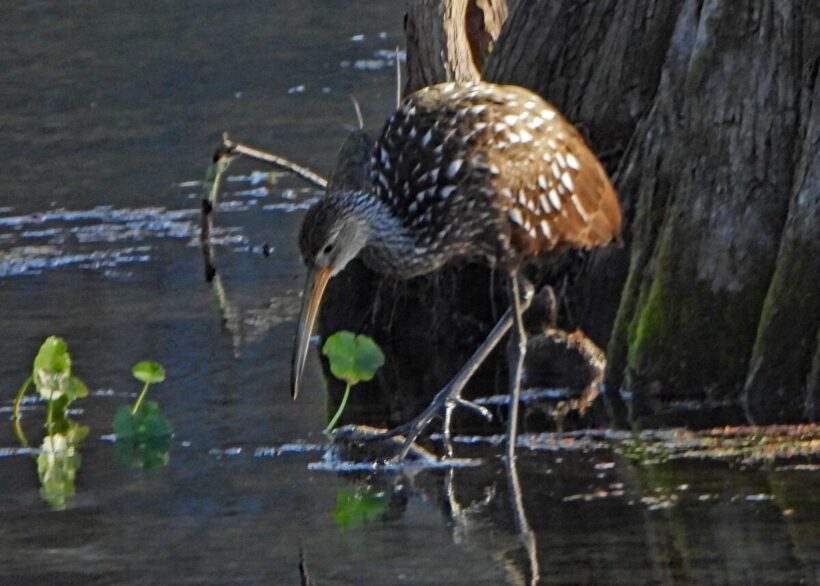Become a citizen scientist
Join the great backyard bird count of 2022

A merlin perched on top of the snag. A snag is dead tree that has become an invaluable habitat for many species. [Nancy Stephens/Special to the Gazette]
Birds are everywhere. Ornithologists, the scientists who study birds, are not able to be everywhere. But everyday citizens, are in fact, pretty much everywhere. The purpose of the Great Backyard Bird Count (GBBC) is to help us understand and preserve our birds.
Over the past fifty years, the bird population in North America has declined by one-third, which means we have lost three billion birds! Because of the many threats to our valuable bird population, it is more important than ever to provide boots-on-the-ground data to the scientists who are tracking this critical issue and coming up with solutions.
There are multiple threats to our bird population; climate changes affecting their migration, breeding and survival of newly hatched chicks, pesticides and herbicides, habitat loss due to development, sea-level rise, and the increasing use of non-native plants and trees in landscape design. Bird/window collisions wipe out one billion birds each year. Additionally, outdoor cats, both domestic and feral, kill 1.4 billion birds each year.
The GBBC, a joint project between the Cornell University Lab of Ornithology and the National Audubon Society in partnership with Bird Studies Canada, first took place in 1998, and this year marks the 25th GBBC.
Globally, 190 countries participated in 2021 with over 379,726 eBird checklists being submitted. Together, they counted 6,436 species of birds, something only possible because citizen scientists contributed to the amazing amount of data collected.
This year’s GBBC takes place from Friday, February 18th through Monday, February 21st.
To get involved, keep reading!
Start by logging on to www.birdcount.org/participate/. You will be guided, step by step, through the process. Once registered, you will be asked to count for at least 15 minutes, but longer is always good too. The free Merlin Bird ID app is helpful and easy to install on a cellphone. You will need either the eBird app for your cellphone or to log on to www.eBird.org from a desktop or laptop computer to enter findings. Whichever way you access it, you will receive instructions on how to create an account.
Wondering where can you go to count the birds?

A limpkin standing in the water on the shore of Rainbow River. [Sandra Maraffino/Special to the Gazette]
It can be as simple as sitting on your back porch, front porch, or patio and observing your birdbath and/or bird feeders if you have them. Walking neighborhood parks or retention or stormwater ponds is another great way to observe our feathered friends! The City of Ocala has several parks that provide amazing birding experiences; Tuscawilla Park and the Ocala Wetland Recharge Park are birding “hotspots”.
County parks are great too. Coehadjoe Park is always a favorite. There’s also Silver Springs State Park where hiking trails or birding by kayak on the Silver River is an option. Rainbow Springs State Park and the Rainbow River are great as well. Indian Lake State Forest is also one of the best for birding. All in all, there are so many wonderful places to enjoy nature here in Ocala/Marion County.
The Marion Audubon Society will have a free educational program via Zoom on Tuesday, February 15th at 7:00 pm. “Everything eBird” by Michele Reyes, will provide complete instruction in the use of the birding app.
For more information, visit www.marionaudubon.org. Information will also be posted on the Marion Audobon Society’s Facebook page as well as on their MeetUp. A GBBC bird walk will be held on Friday, 2/18/22 at Tuscawilla Park, located at 829 Sanchez Avenue, starting at 10 a.m. All are welcome to join!





